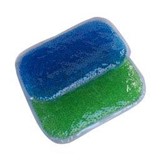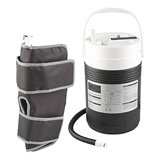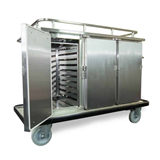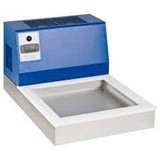The agent demonstrated strong binding to activated platelets at the temperature typically used for hypothermia but none at normal body temperature in preclinical experiments led by Karlheinz Peter, MD, PhD, of Baker IDI Heart & Diabetes Institute in Melbourne, Australia.
It also kept fibrinogen from binding to activated platelets at 22°C (71.6°F) but not at 37°C (98.6°F), they reported at the American Heart Association's Arteriosclerosis, Thrombosis and Vascular Biology meeting in San Francisco.
This profile has the potential to substantially improve the safety of medically-induced hypothermia, Peter said in an interview.
Much further confirmation of the safety and efficacy of this agent is needed, but the proof-of-concept results do look promising, agreed Robert A. Hegele, MD, of the University of Western Ontario in London, Ontario, and co-chair of the ATVB conference.
Bringing the temperature down during cardiovascular surgery and intensive care for cardiac arrest reduces the metabolic requirements of the brain and other tissues, allowing them to survive with less ischemic injury.
For selected cardiac arrest patients, the AHA recommends using cooling blankets, ice packs, or other methods to lower body temperature for 12 to 24 hours. Doing so has been shown to improve overall survival rates and reduce long-term disability.
However, this therapy causes clots.
Lower temperatures partially activate platelets, and as blood flow slows because of the chill, those platelets come closer together and may stagnate, Peter explained.
Adding to this danger, patients are immobile and cardiac surgery often introduces extra clotting risk from the heart-lung machine, he noted in an interview.
For these reasons, patients are given anticlotting drugs as standard of care during therapeutic hypothermia. But these drugs have a long half-life and continue working when they are no longer needed, increasing the risk of bleeding complications when patients are brought back to a normal body temperature, Peter said.
Most surgeons use heparin, which can be partially antagonized after the operation, he told MedPage Today, but "the drug pool available for surgeons is very limited."
Therapeutic hypothermia remains relatively uncommon, in part, because of practical limitations and the 10% to 40% bleeding and clotting complication rate, Hegele said in an interview.
Having a drug that would make the technique safer could definitely increase its use, he suggested.
So, Peter's group used recombinant DNA techniques to fuse together a protein that mimics elastin -- the protein that makes skin and blood vessels flexible and which is known to change shape with temperature -- to an activation-specific antibody that would block the glycoprotein IIb/IIIa receptors that enable clotting.
They found that the fusion molecule has a spiral structure that blocks the binding site when warm but changes its conformation to expose the binding site when cold.
The molecule was also specific for binding to activated GPIIb/IIIa only, not all forms of the receptor -- activated or not -- as currently available anticoagulants inhibit, Peter said.
In human and mouse blood samples, the experimental agent appeared to inhibit fibrinogen binding to platelets as well as abciximab (ReoPro) and eptifibatide (Integrilin) at 22°C (all P<0.05 versus control).
At 37°C, though, the agent showed no significant effect on platelet aggregation, unlike abciximab and eptifibatide.
The researchers cautioned that much more study is needed in animal models before the agent could enter human trials.
One concern is whether large pharmaceutical companies will be interested in a drug with a niche market like this, despite the rising proportion of cardiac surgeries being done under hypothermic conditions, Peter said.
Regardless of whether it ultimately goes to market, the molecule is a good example of how small laboratories can design an "intelligent" drug on paper and develop it in a way that a few years ago only large pharmaceutical companies could, he concluded.







